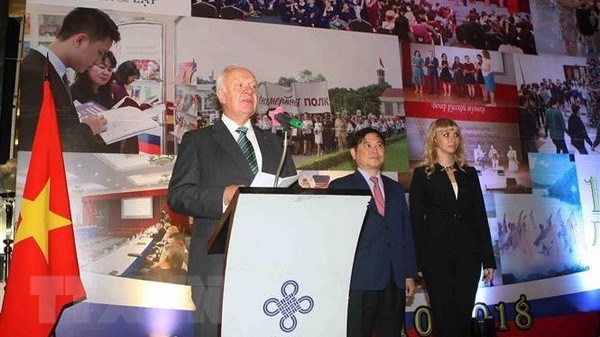


|
 Russian Ambassador Konstantin Vnukov speaking at the event (Photo: VNA)
|
|
|
Speaking at the event, Russian Ambassador Konstantin Vnukov said
the centre has conducted multidimensional activities as part of cultural,
scientific and educational cooperation between the two countries over the
past years, contributing to bilateral comprehensive partnership.
He expressed his hope that with joint efforts, both sides will
successfully hold the Russia – Vietnam Year and the Vietnam – Russia Year
next year.
Phan Xuan Dung, Chairman of the Vietnam – Russian Friendship
Parliamentarians’ Group, lauded the centre for holding activities to raise
mutual understanding between the two peoples, including concerts and
discussions on Russia’s potential in science-technology, economy and
investment.
Both sides organised forums, round-table seminars, meetings
between young people, photo exhibitions, film screening, classical and
contemporary Russian concerts.
From October 10-17, a show staged by dancers from the Moscow
State Dance Theatre Gzhel, an exhibition by Russian painter M.V. Stoyachko
were held.
Four contemporary Russian films were also screened Hanoi, Da
Nang and Ho Chi Minh City.
|
Source: NDO